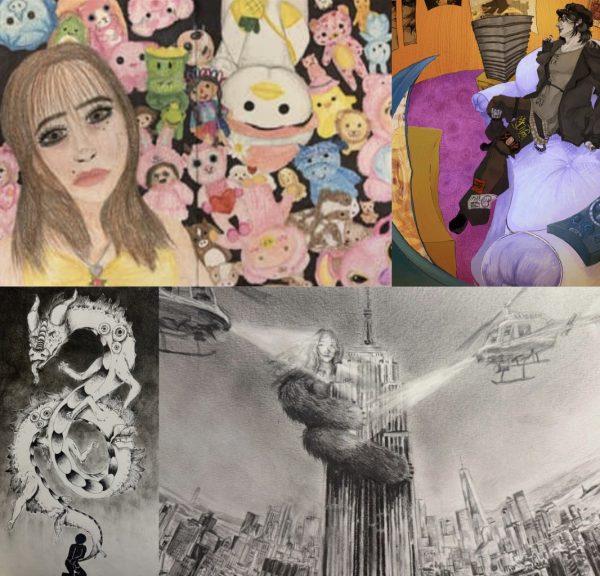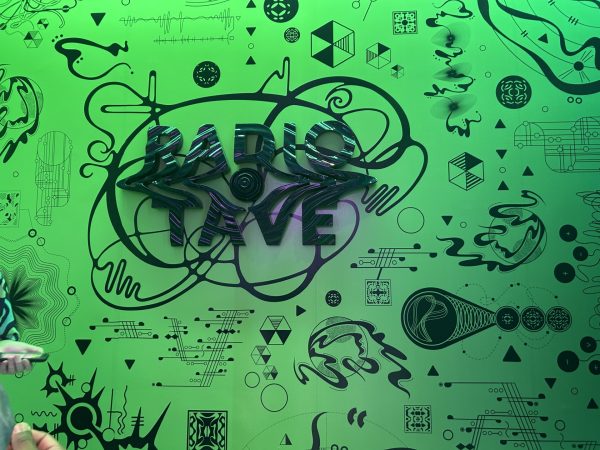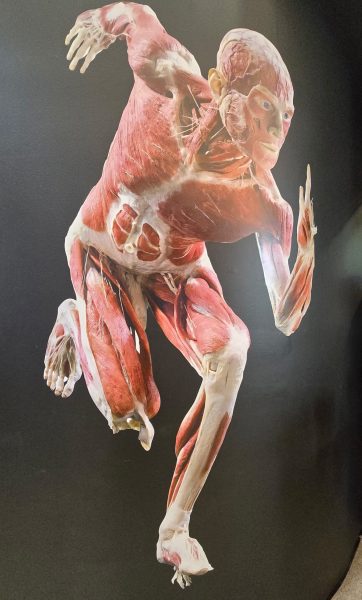Op-Ed: Facing the stigma
Photo Credit: Zero Gravity Management
Rain is the main protagonist in the most recent psychological thriller, Fear of Rain.
Earlier this month, the movie Fear of Rain was released. It used the main character’s auditory and visual hallucinations due to schizophrenia, a mental disorder that alters the way a person thinks, feels, and behaves; to completely immerse its audience in what living with schizophrenia is like. Whenever something occurs on screen, viewers, much like those with schizophrenia, are forced to ask themselves, “Is this real?” However, Fear of Rain is just one of few movies which portrays mental illness in an accurate way. Rather than using Rain’s mental disorder as a reason for her to become a killer, which is a common trope in moviemaking.
Inherently bad movies that follow this trope are in no scarcity, with movies like Words on Bathroom Walls (2020), which romanticizes living with mental illness.
The list of movies that exploit or sensationalize mental illness continues, with dissociative identity disorder, or DID, also previously known as Multiple Personality Disorder, being a frequently misrepresented mental disorder among these. This includes Me, Myself, and Irene (2000), a slapstick comedy which was made to make fun of the disorder. Split (2016) and its successor Glass (2019) feature an unrealistically violent person with DID.
The trope of a violent person with DID is frequently propounded in movies. This portrays those with the disorder as murderous and dangerous criminals.

The main antagonist of Split has Dissociative Identity Disorder (DID) – previously known as Multiple Personality Disorder. This mental disorder is characterized by multiple identities in one body.
“Dissociative identity disorder involves a lack of connection among a person’s sense of identity, memory and consciousness. People with this disorder do not have more than one personality but rather less than one personality,” says Dr. David Spiegel in an article for psychiatry.org.
There is very little research on this disorder, and many of its symptoms can be confused with schizophrenia or bi-polar personality disorder, which has caused many to doubt the validity of a DID diagnosis. However, DID is a listed disorder in the DSM-IV, meaning it is a clinically recognized disorder.
While Glass revolves around the Horde’s violence. But in real life, “systems” or a collection of alters- or dissociated states- are more likely to hurt themselves than others. A research recently conducted among 173 systems by the International Society for the Study of Trauma and Dissociation (ISSTD) shows that 3% of these systems were charged with an offense, 1.8% had been fined in the past, and less than 1% were jailed for over a 6 month span.
DissociaDID, a clinically diagnosed system, reacted to the stigma created by Glass/Split poorly.
“The stigma propagated by Split is incredibly harmful to an already extremely misunderstood disorder. It encourages the belief that it [DID] and the people who live with it are inherently dangerous and do not exist outside of a movie theater.”

However, this treatment is not new. Older examples of this treatment include Psycho (1960), where the serial killer antagonist is revealed to be suffering from DID, or Identity (2003), where the exact same trope is used in an equally harmful way.
This stigmatization persists, with new movies, books, articles, etc. being drafted every month, only strengthening the fear unaffected persons have to the mentally ill.
Movies not only misrepresent DID, but almost every other mental illness.
Another damaging movie is Words on Bathroom Walls, which I watched earlier this month. Of course, compared to Glass/Split, Words on Bathroom Walls was a much more relaxed film in terms of its presentation of stigma. In the beginning of the movie, I was even excited as schizophrenia seemed to be well-researched among the cast and staff. However, there was a disappointing turn, and the movie became another high school love story, only with a schizophrenic twist. Because of this, it came off as prettification of schizophrenia at times.
All this being said- do movies even affect people’s opinions?
Nin, the host of the aforementioned clinically diagnosed DissociaDID system, detailed an event on her YouTube channel where she told her friend she may switch, or move between alters. Her friend then proceeded to move away from her, then asked the question, “Should I be scared?”
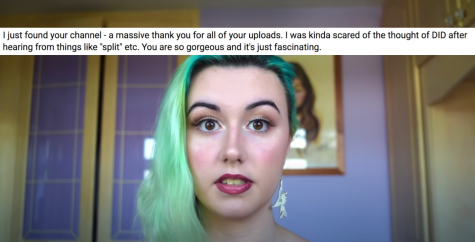
“The success of the film [Glass] had a tangible backlash. Yes, it raised awareness for DID, but for all the wrong reasons. It stimulated a hatred for DID, a fear for DID, and reaffirmed the stereotypes that result in this disorder not being taken seriously, therefore being under researched, doctors being under trained on the subject (if they are trained on it at all), people presenting symptoms only to be laughed off by professionals, who, despite it being a recognized disorder in the DSM and the ICD, believe it’s not real or simply an amusing film trope,” says Nin in a video on her channel.
In an informal survey I issued in February, one of 20 anonymous responders said, “Movies have definitely altered my perspective of mental illness, especially as a child since I would watch movies where they’d make jokes about the subject, which in turn led me to joke about being ‘so OCD’ because I was a perfectionist, or “being psychotic” because I would make rash decisions without thinking them through. It took a lot of educating myself to unlearn the negative stereotypes that movies present to impressionable audiences, and I’m still in the process of unlearning.”
 According to the same survey, 85% of people have watched a movie that featured a character with mental illness, and 80% of the total responders also agreed that there were good and bad movies when it came to the depiction of mental illness, and 25% agreed mental illness is represented in ways that depict the mentally ill as violent people.
According to the same survey, 85% of people have watched a movie that featured a character with mental illness, and 80% of the total responders also agreed that there were good and bad movies when it came to the depiction of mental illness, and 25% agreed mental illness is represented in ways that depict the mentally ill as violent people.
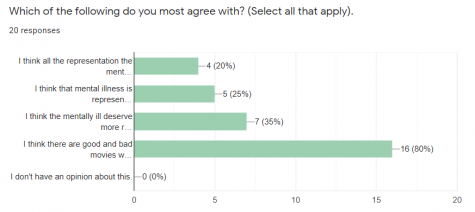
“I’ve seen plenty of movies where they negatively portray mentally ill individuals, sometimes for the sake of ‘comedy.’ Those with mental health issues are portrayed as violent and dangerous, and more often than not, those characters would end up harming someone else. On the flip side, there are some movies with positive representation, but they are rare and often make it the main topic of the movie (which is definitely okay, if that’s what the movie was meant to be about),” said another one of the anonymous responders.
The below gallery is a compilation of all of the open-ended responses recorded.
The best way to fix this issue is by introducing more movies that do their research on the mental illness they are featuring. We desperately need more movies like A Beautiful Mind, which, unlike The Visit and Words on Bathroom Walls, doesn’t prettify living with schizophrenia nor does it associate schizophrenia with violence, rather, it shows the true struggle of John Forbes Nash Jr. with schizophrenia.
I see no problem with writers wanting to incorporate mental illness into their movies. There’s a problem when they showcase mental illness in a damaging light or create characters with mental illness without referencing someone with the illness or a licensed professional.
Glass, Words on Bathroom Walls, Me, Myself, and Irene, The Visit – these movies and many more have done more harm than good in reinforcing the stigma around mental health.
Your donation will support the student journalists of Carnegie Vanguard High School. Your contribution will allow us to cover our annual website hosting costs and fund field trips, competition fees, and equipment. We appreciate your support!

Nadia is a senior at CVHS in her 4th year of writing for the Upstream. She has been writing as a hobby and competitively for nearly a decade and her favorite...




